Heart-shaped leaves and purple blossoms are a captivating combo that has enchanted many plant enthusiasts. The heart-shaped foliage, with its eye-catching symmetrical curves, has been associated with love and passion. Meanwhile, the striking purple flowers have been linked to royalty and spirituality.
The following list is about 10 enchanting heart-shaped leaves with purple flowers you need to know to add a touch of charm to your garden and home. Let’s get rolling!
Table of Contents
Perennial Plant with Heart-Shaped Leaves and Purple Flowers
Heartleaf Bergenia (Bergenia crassifolia)
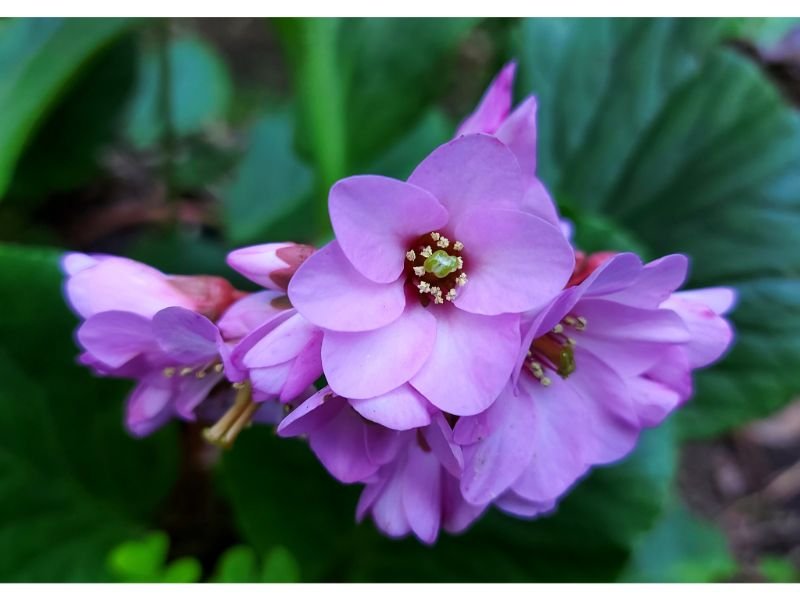
Plant Zones: 3 to 8
Plant Size: 0.8 to 1.3 feet (25 to 40 centimeters) tall
Suitable For: Small growing space, heavy-shade gardens
The heartleaf bergenia are our first heart-shaped leaves purple flowers that love thriving in colder areas. These spring and summer bloomers have clusters of tubular-shaped flowers that grow in individual upright stems, with a splash of purple or pink colors. Although they can survive the warm, direct sun, it’s recommended to grow the heartleaf bergenia in shady areas to get the best results.
Akiohala Purple Hibiscus (Hibiscus furcellatus)

Plant Zones: 10 to 12
Plant Size: 2 to 4 feet (60 to 120 centimeters) tall as a houseplant
Suitable For: Small growing space, butterfly or pollinator gardens
This one is native to Hawaii and the flowering part has been used by the locals as clothes dye and for medicinal purposes to treat constipation. The akiohala purple hibiscus needs very minimal care, they don’t need a lot of water but like to be in constant moisture. They thrive best in acidic soil, and if you’re not sure which type of soil you have it’s highly recommended to do a pH test before growing one.
Wild Violet (Viola sororia)

Plant Zones: 3 to 7
Plant Size: 0.4 to 1 foot (15 to 30 centimeters) tall
Suitable For: Small growing spaces, butterfly gardens, cottage gardens
Wild violet takes more time to reach their mature stage, but once established, they will provide you with attractive flowers that are fragrant and edible.
These heart-shaped leaves with purple flowers preferred growing conditions in areas with shade to partial sun, but would not mind being in bright and warmer areas for a maximum of 6 hours a day. The germination process is typically done by self-seeding.
Purple Hybrid Clematis (Clematis hybrida)
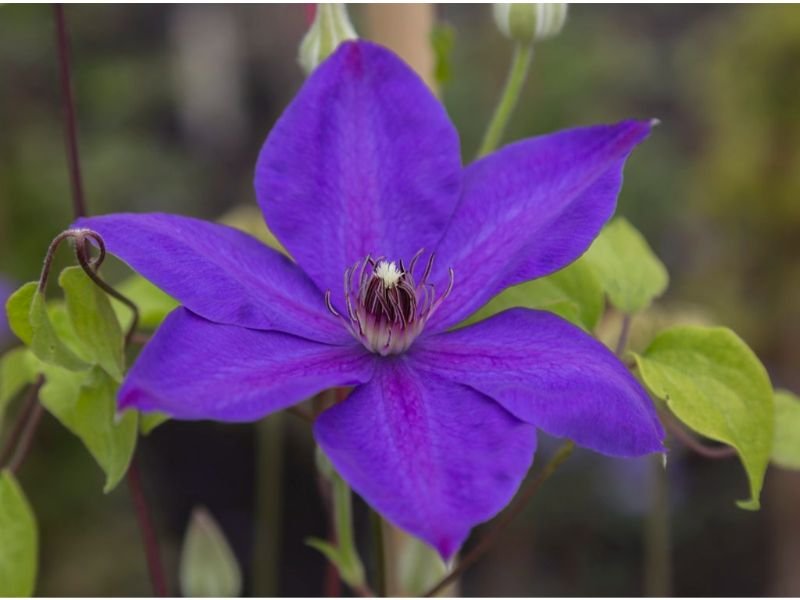
Plant Zones: 4 to 9
Plant Size: 8 to 10 feet (240 to 300 centimeters) tall or more
Suitable For: Outdoor gardens, cottage gardens
Although the purple hybrid clematis contains protoanemonin, a poisonous chemical that is harmful to humans and pets, they remain one of the most favored flowering plants among gardeners. The main reason would be their ease of growing, as purple hybrid clematis requires a maintenance routine that is not so different from any other similar plants. These heart-shaped leaves with purple flowers thrive under full sun to partial shade conditions, with persistent moisture and a regular watering schedule.
Greek Cyclamen (Cyclamen graecum)
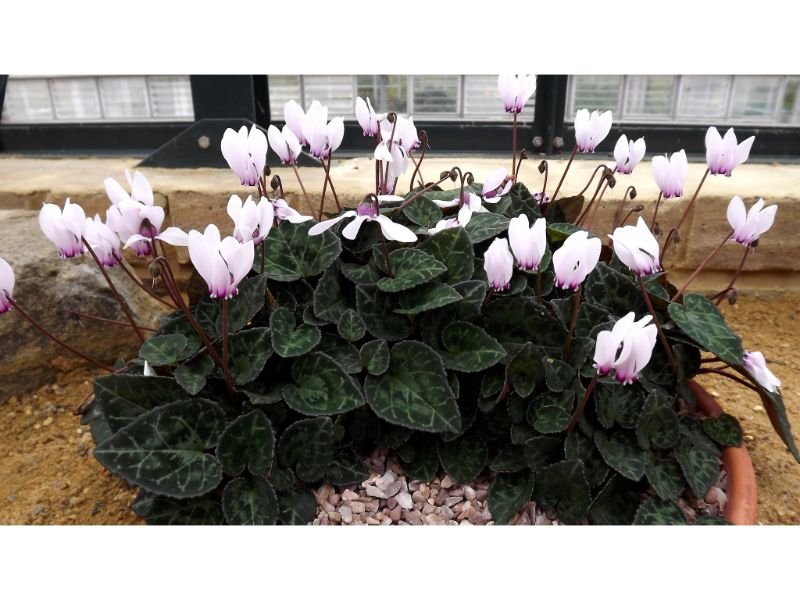
Plant Zones: 7 to 9
Plant Size: 0.4 to 2 feet (12 to 60 centimeters) tall
Suitable For: Small growing space, heavy-shade gardens
Greek cyclamen is a charming perennial plant native to Greece and other parts of the Mediterranean. They produce delicate heart-shaped foliage with eye-catching patterns made from dark green and silverish-green. The fragrant blossoms range not only in purple but also in magenta, pinkish-purple, to white. They need a daily dose of bright but indirect light, with moderate watering.
Dead-nettles (Lamium)

Plant Zones: 3 to 8
Plant Size: 0.3 to 0.8 feet (10 to 25 centimeters) tall
Suitable For: Small growing space, pollinator gardens
There’s no more in life than feeling the joy of growing your edible plants, and with dead-nettles, you can enjoy that satisfaction! These heart-shaped leaves with purple flowers are tasty herb that is also easy to grow. The ideal growing conditions for dead-nettles is an area with full to partial shade, with well-draining soil that is moist but not waterlogged. This plant is also quite tolerant to cold temperatures, making them perfect for gardeners who live in cooler climates.
Annual Plant with Heart-Shaped Leaves with Purple Flowers
Morning Glory (Ipomoea purpurea)
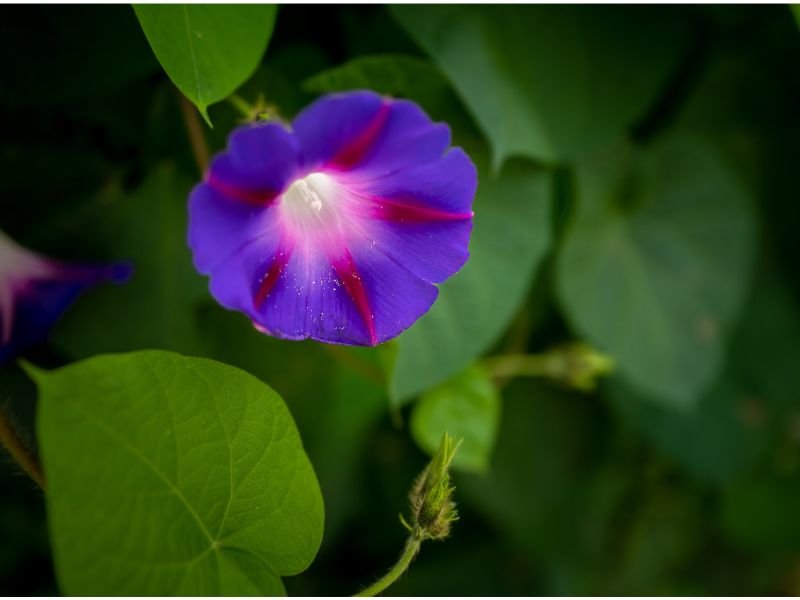
Plant Zones: 2 to 11
Plant Size: 5 to 10 feet (152 to 300 centimeters) tall
Suitable For: Small growing space, vertical space
Morning glory is a famous vine with heart-shaped leaves and purple flowers that is ideal for gardeners of all levels of experience. They thrive in areas with full to partial sun and well-drained soil. Keep the soil’s pH to be neutral for your best bet. Once established, they need little watering and fertilizing, but make sure to keep the soil moist and avoid drought.
Purple Italian Bellflower (Campanula isophylla)
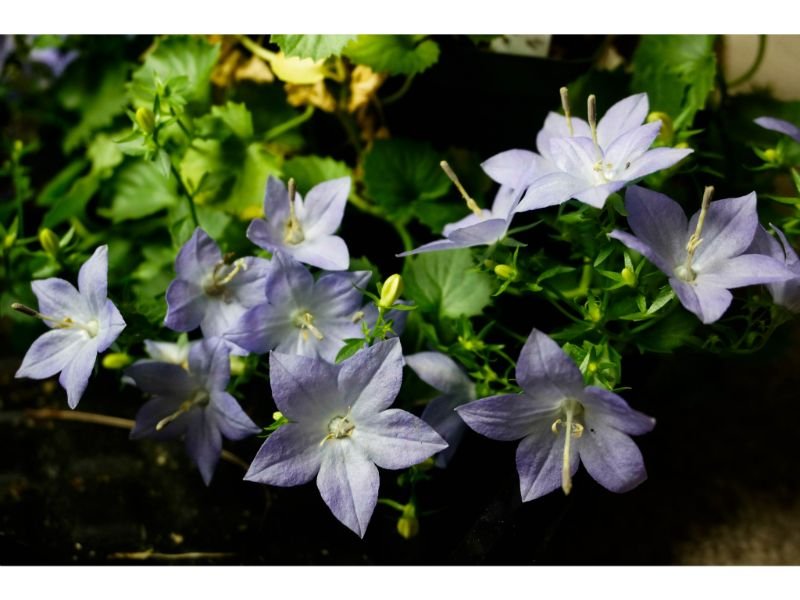
Plant Zones: 6 to 10
Plant Size: 1 to 6 feet (30 to 182 centimeters) tall
Suitable For: Small growing space, indoor and outdoor gardens
Through fall and summer, you’d likely see the purple Italian bellflower blooming freely in their native country, from the alps to the North-western area of Italy. The plant prefers well-draining soil that is also rich in high organic matter. To prolong these heart-shaped leaves and purple flowers’ blooming time, you might want to deadhead the flowers, which will encourage the plant to produce new, healthier blooms.
German Primrose (Primula obconica)

Plant Zones: 8 to 11
Plant Size: 1.3 to 1.6 feet (40 to 50 centimeters)
Suitable For: Small growing space, shade gardens, pollinator gardens
These native to China heart-shaped leaves with purple flowers are now commonly grown in gardens around the world. The German primrose is a fan of moist and cooler temperatures, and they love to be watered a little bit more than usual when it’s in a warmer season. But it’s important to note that this plant is not tolerant to both frost and heat. The best temperature for the German primrose to thrive is between 54 to 70°F (12 to 21°C).
Purple Common Lilac (Syringa vulgaris ‘Sensation’)
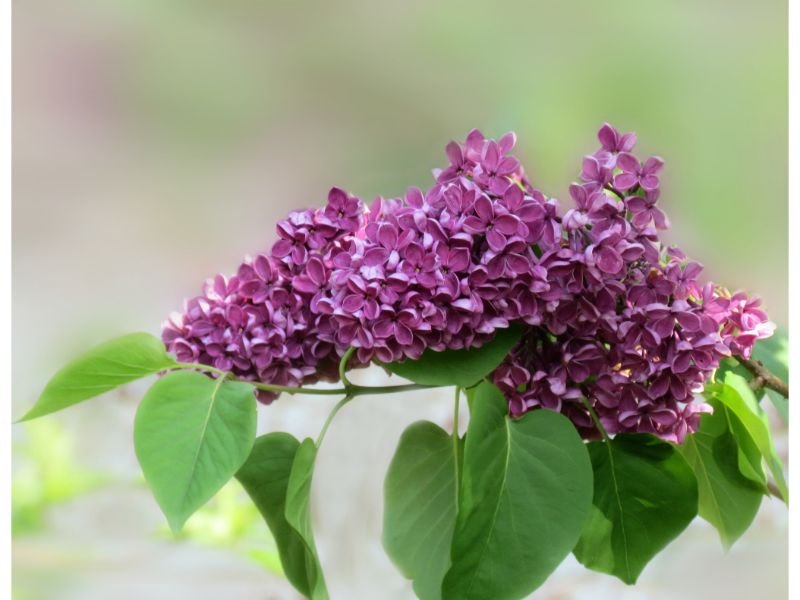
Plant Zones: 3 to 7
Plant Size: 5 to 8 feet (152 to 243 centimeters) tall as a houseplant
Suitable For: Small growing space, pollinator gardens, butterfly gardens, patio
These heart-shaped leaves with purple flowers can be gigantic if given more space to grow, however, it’s possible to keep them as a medium to a small-sized houseplant. The purple common lilac is simply growing in loamy soil with high organic matter and a good drainage system. They thrive in areas with full to partial light, but for the best-producing blooms, areas with full sun are preferred.
Is A Purple Heart-Shaped Leaf Plant Right For You?
To conclude, heart-shaped leaves with purple flowers are suitable not only for purple fans but also for those who crave a touch of romance and elegance in their landscape. Make sure to pick one that matches your available space and desired level of maintenance.

New author in the hood. Loves gardening and flowers are my spirit animals (yes I know they are not animals but I insist). I will be covering most of the flowers’ topics here and occasionally random though as well.






